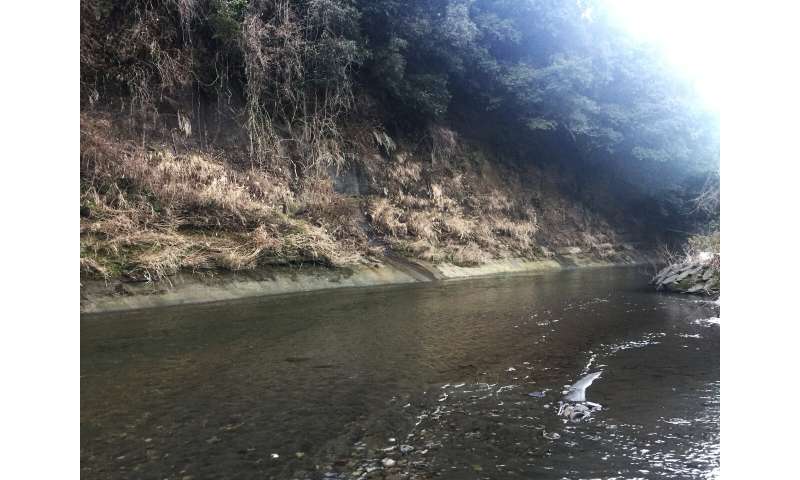https://phys.org/news/2020-10-earth-magnetic-reversal.html
Yuki Haneda (left, top) and colleagues collected samples from the Chiba composite section, a continuous and expanded marine succession in Central Japan
Credit: NIPR/AIST/Ibaraki University
Earth's magnetic fields typically switch every 200 to 300 millennia. Yet, the planet has remained steady for more than twice that now, with the last magnetic reversal occurring about 773,000 years ago. A team of researchers based in Japan now has a better understanding of the geophysical events leading up to the switch and how Earth has responded since then.
The researchers published their results on September 1in the Progress in Earth and Planetary Science journal.
Named for the geophysicists who discovered past geomagnetic reversals, the Matuyama-Brunhes geomagnetic reversal is one of the most studied paleomagnetic events, according to paper author Yuki Haneda, project researcher at the National Institute of Polar Research and a postdoctoral research fellow at the National Institute of Advanced Industrial Science and Technology in Japan. Such reversals swap the magnetic poles of the planet, which could have implications for plant and animal life. Such extrapolation to life, including humans and our ancestors, depends on the duration of the magnetic flip.
Previous studies by other researchers examined samples taken from lava flows, which offer a good snapshot of moments in geophysical history, according to Haneda.
"However, lava sequences cannot provide continuous paleomagnetic records due to the nature of sporadic eruptions," Haneda said.
A series of studies based out of Italy suggested that the magnetic reversal took place within a single century—a blink in the scale of hundreds of thousands of millennia.

Yoro River section, one of Chiba composite section. It is the upper part of the stratum.
Credit: NIPR/AIST/Ibaraki University
The researchers found that the geomagnetic field became unstable at least 10,000 years prior to the magnetic direction change 773,000 years ago, and the full reversal process took at least 20,000 years.
"Our data is one of the most detailed paleomagnetic record during the Matuyama-Brunhes geomagnetic reversal, offering deep insight into the mechanism of the geomagnetic reversal," Haneda said.
Next, the researchers will investigate how the geomagnetic reversal influenced plankton and plants, using marine microfossil and pollen data found in their samples.
Recommend this post and follow
Sputnik's Orbit
https://disqus.com/home/forum/thesputniksorbit-blogspot-com/



No comments:
Post a Comment